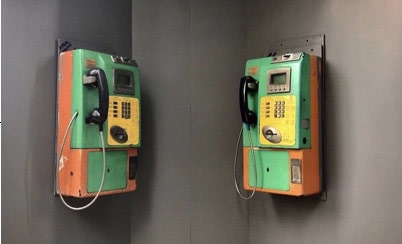Incinerator in MRC Pontiac? Let’s seriously think about that

Is an EFW – energy from waste – incinerator located in MRC Pontiac part of our collective future?
We are told that 99.9 percent of the residual waste that would be trucked here – some 395,000 tonnes annually – must come from Ontario or other parts of Quebec because MRC Pontiac cannot produce enough residual waste to make an incinerator profitable.
Therefore, we’d import 395,000 tonnes to “top up” MRC Pontiac’s production of some 5,000 tonnes.
Is this sensible?
Questions
How many trucks will transport sometimes toxic residual waste along our increasingly congested, pothole filled Highway 148 plus across the ecologically sensitive Ottawa River?
Regarding trucks, in her letter, “Leader in Waste Management”, Warden Jane Toller explained, “The number of trucks required which pick up at transfer stations carry 25-30 tonnes each…”
At 30 tonnes per truck, that means 13,167 truckloads would be travelling our highways. That’s 66 trucks daily (over 200 working days annually).
Where will the transfer stations be? Will some require construction and if so, where? Any in the MRC des Collines de l’Outaouais, where the Municipality of Pontiac (including Breckenridge, Luskville and Quyon villages) are located?
This Energy From Waste facility’s name sounds promising. But what’s the proof? In her letter, Toller wrote, “Sweden, Denmark and Norway are leaders with waste management in the world today. Their high rate of recycling, composting and use of EFW facilities to process the residual waste is exemplary. They incinerate 50 per cent of their residual waste rather than using landfills.”
That means 50 per cent of residual waste cannot be incinerated. Should we assume it will be transported here in any case? If so, where will that possible 50 per cent (or any per cent) be dumped? A new, on-site landfill?
And before we even think of where that landfill may be constructed, is MRC Pontiac able to match that Scandinavian percentage?
Moreover, precisely how will the energy that this EFW plant produces be used? What infrastructure will be built such that power produced is locally used? Will the community housing the incinerator receive free energy to power their village?
Rural communities suffer
Homo sapiens possess addictive personalities regarding consuming products, where overconsumption creates overproduction of waste.
We can earnestly discuss circular economies, economies of scale, and encourage everyone to do their part to promote sustainable energy, reduce waste, be responsible citizens. We can argue we’ll be leaders in waste management if we welcome this incinerator.
Unfortunately, this EFW solution is at the very least following an unfair, i.e. undemocratic, process.
It’s unfair for sparsely populated, still reasonably biodiverse rural communities to be “encouraged” to accept urban waste without the consequences of doing so being adequately presented via town-hall meetings, frank discussions – and a referendum.
A true circular economy, which Toller and I both advocate, sees companies being responsible for the “cradle to grave” life of the products they create.
Is a Pontiac EWF a true example of a circular economy?
Seems to me that a Pontiac EWF is tediously another example of a linear economy, where unsightly, toxic junk that city residents, businesses and industries produce but cannot use would simply be shipped well away from major centres into the countryside. Transport trucks, which damage already fragile infrastructure, would drive west from Gatineau/Ottawa to an MRC-based incinerator where possibly 50% of the residual waste cannot be incinerated but will need to be landfilled.
What’s “circular” about that?
Town Halls, Referendum please
We need serious information about how this incinerator will work. All residents of MRC des Collines de l’Outaouais and MRC Pontiac need information followed by a referendum.
We all produce waste. How we deal with it is serious business and yes, all of us need to be part of the solution. But is it reasonable for producers of 5,000 tonnes to accept 79 times as much tonnage “from away”?
Katharine Fletcher is a freelance writer and visual artist. Contact her at fletcher.katharine@gmail.com
Photo caption: View from the Vignoble Les Collines, located in Luskville in the Pontiac, on a smoggy summer day in late June.
Photo credit: Alana Repstock






